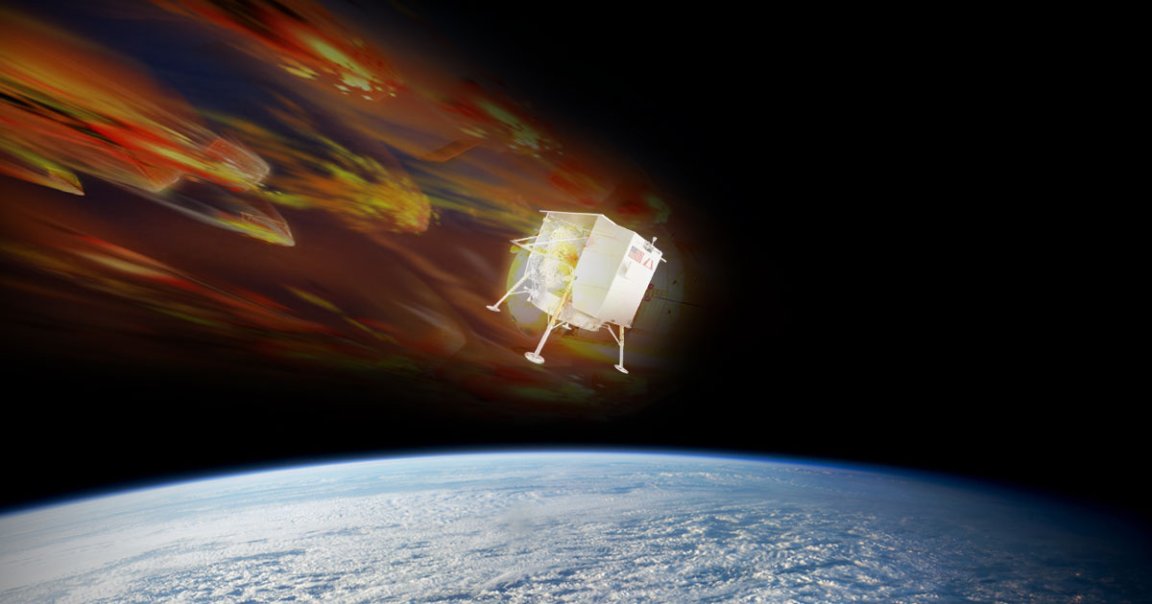
It’s been just over 50 years since the US last landed on the Moon.
The nation’s last mission to the lunar surface, Apollo 17, took place in December 1972, and also marked the last time humans have set foot on our planet’s natural satellite.
Last week, Pittsburgh-based private space company Astrobotic attempted to make the nation’s triumphant return with its uncrewed Peregrine One lander.
The spacecraft launched on a United Launch Alliance Vulcan rocket from Cape Canaveral, but mere minutes into the launch “an anomaly occurred, which prevented Astrobotic from achieving a stable Sun-pointing orientation,” per a statement from the company.
Without an opportunity to fully charge its batteries, the mission was on thin ice right off the bat. Eventually, instead of journeying to the Moon, the lander was doomed to drift around the Earth, human remains in tow, as its fuel ran low.
Just over a week later, the lander is still derelict and officially set to meet its final demise as it burns up in the Earth’s atmosphere, several hundred thousand miles away from its intended destination.
It’s an unfortunate and fiery death for a lander that was meant to have the US officially reenter the ongoing race to populate the Moon’s surface. It’s also a setback for NASA’s commercial ambitions, as Astrobotic’s lander was meant to become the first private lander to softly touch down on the lunar surface.
Astrobotic is now trying to make the most out of the unfortunate situation.
“While we believe it is possible for the spacecraft to operate for several more weeks and could potentially have raised the orbit to miss the Earth, we must take into consideration the anomalous state of the propulsion system and utilize the vehicle’s onboard capability to end the mission responsibly and safely,” the company wrote in a statement.
The intention of a fiery reentry is to ensure no dangerous space debris is left behind, which could endanger future space missions.
“Ultimately, we must balance our own desire to extend Peregrine’s life, operate payloads, and learn more about the spacecraft, with the risk that our damaged spacecraft could cause a problem in cislunar space,” the statement reads. “By responsibly ending Peregrine’s mission, we are doing our part to preserve the future of cislunar space for all.”
According to Astrobotic, Peregrine One “continues to leak propellant.” Despite technically having “main engine propulsive capability,” the “fuel to oxidizer ratio is well outside of the normal operating range.”
While a trip to the Moon is no longer on the table, Astrobotic has used the opportunity to test out a variety of different systems, which “all performed as expected in space.”
“It is a great honor to witness firsthand the heroic efforts of our mission control team overcoming enormous challenges to recover and operate the spacecraft,” Astrobotic CEO John Thornton said in the statement. “I look forward to sharing these, and more remarkable stories, after the mission concludes on January 18.”
“This mission has already taught us so much and has given me great confidence that our next mission to the Moon will achieve a soft landing,” he added.
More on the mission: Gene Roddenberry’s Remains Now Drifting Through Space